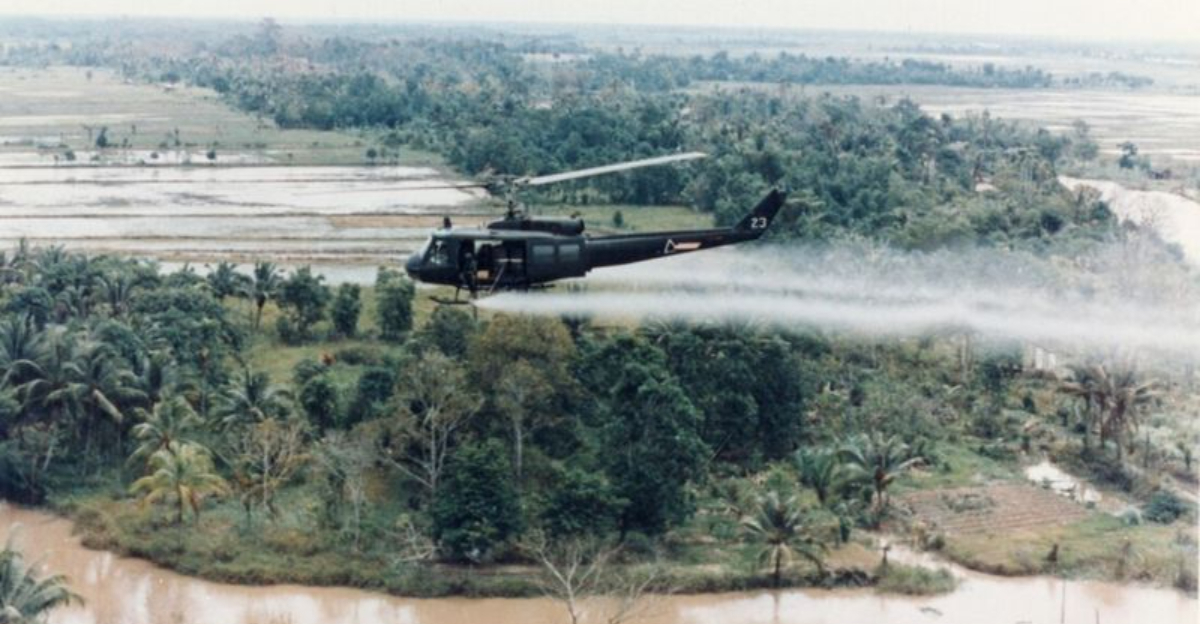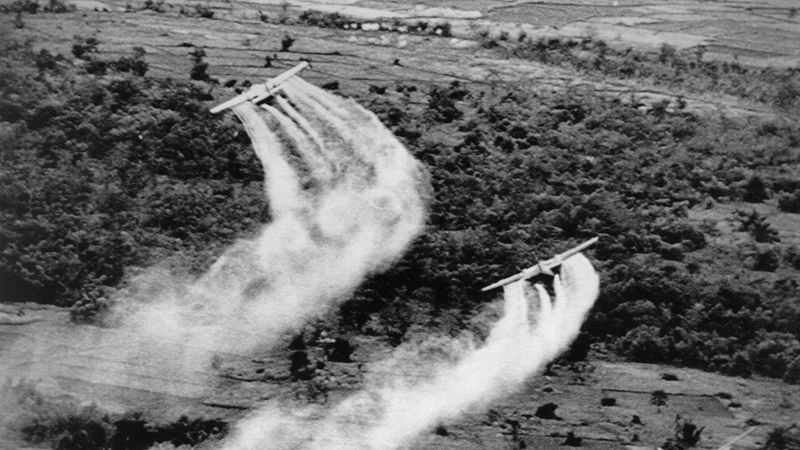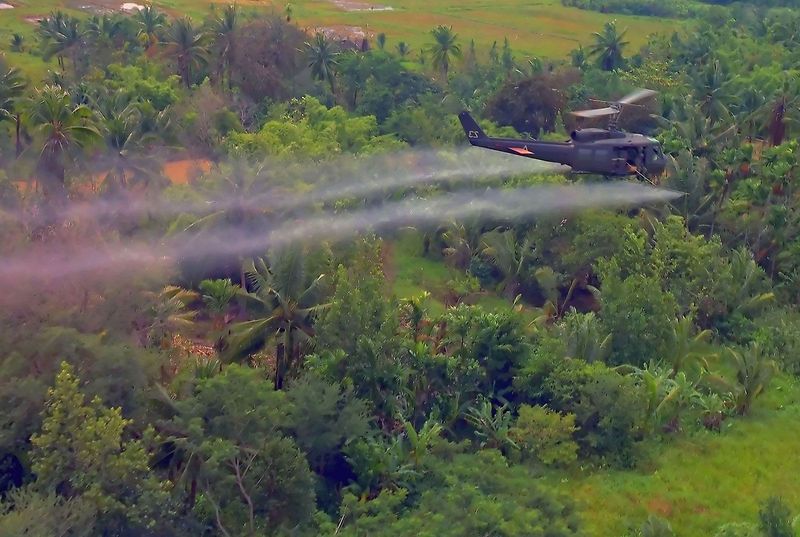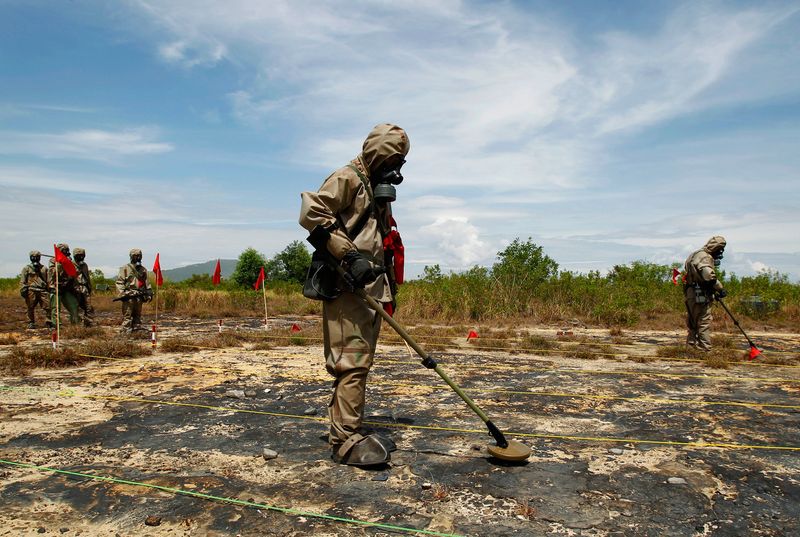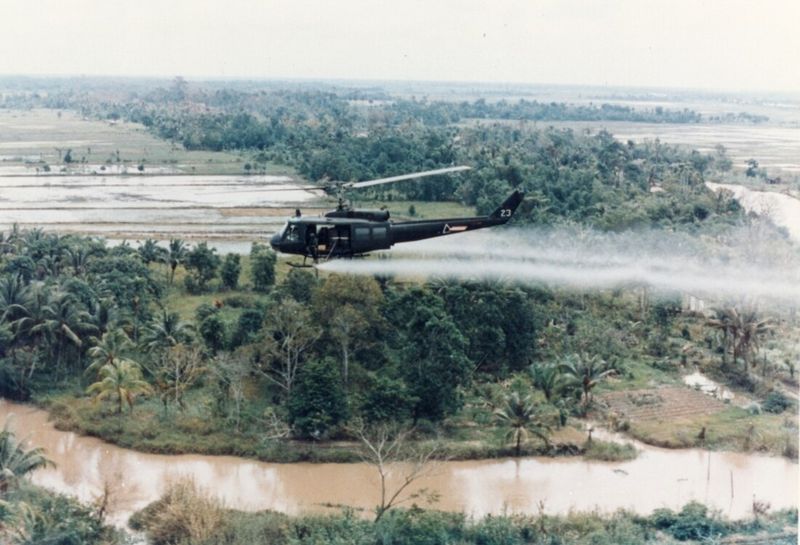Explore seven crucial facts about Agent Orange, the infamous defoliant used during the Vietnam War.
This article highlights its chemical composition, environmental impact, health effects, legal issues, and enduring legacy.
1. Vietnam War Defoliant
During the Vietnam War, Agent Orange was employed as a defoliant to remove dense foliage that provided cover for enemy forces.
The U.S. military utilized this chemical extensively, aiming to weaken the enemy’s strategy by destroying the jungle canopy. This strategy was controversial, as it led to environmental devastation and long-term health effects for humans.
The chemical was sprayed over millions of acres in Vietnam, Cambodia, and Laos, altering the landscape dramatically.
The use of Agent Orange remains a subject of intense debate and scrutiny due to its destructive outcomes and the suffering it caused to countless individuals.
2. Toxic Mix: 2,4-D, 2,4,5-T & TCDD
Agent Orange’s toxic cocktail consisted mainly of two herbicides: 2,4-D and 2,4,5-T. These chemicals were combined to effectively kill vegetation.
However, a toxic byproduct, TCDD, formed during the production of 2,4,5-T. TCDD, a type of dioxin, is highly toxic even in small quantities. The presence of TCDD in Agent Orange was not fully acknowledged initially, leading to widespread contamination.
This chemical combination was designed for efficiency in deforestation but inadvertently resulted in serious health and environmental repercussions. Understanding this mix is crucial for grasping the full scope of Agent Orange’s impact.
3. Lethal TCDD Effects
TCDD, or dioxin, is recognized as one of the most toxic compounds ever created. Its effects on human health are severe, causing cancers, reproductive and developmental problems, and immune system damage.
Exposure to TCDD can occur through contaminated food, water, and air, leading to long-term health issues. The compound’s ability to disrupt endocrine and immune systems makes it particularly insidious.
Communities exposed to Agent Orange suffer from a range of health problems, underscoring the lethal legacy of TCDD. Scientists continue to study its effects, seeking to mitigate the damage caused by past exposure.
4. Persistent Environmental Damage
The environmental impact of Agent Orange has been profound and long-lasting. Forests that were once lush and vibrant became barren landscapes, unable to recover due to contamination.
The chemical’s persistence in the environment has led to soil degradation and loss of biodiversity. Even decades after its use, the effects linger, with ecosystems struggling to restore balance.
The defoliation caused by Agent Orange not only affected plant life but also disrupted the habitats of countless animal species. Efforts to rehabilitate these environments are ongoing, yet the damage remains a haunting reminder of its destructive power.
5. Human Health Catastrophe
Agent Orange exposure has been linked to a myriad of health issues in humans, ranging from various cancers to severe birth defects. Veterans of the Vietnam War and local populations have suffered immensely due to this toxic exposure.
The health ramifications extend over generations, as genetic mutations and diseases are passed down. This human health catastrophe has prompted numerous studies and health screenings, aiming to understand and address the extensive damage.
Efforts to provide medical care and compensation to affected individuals continue, highlighting the ongoing struggle to cope with Agent Orange’s lethal legacy.
6. Legal Battles & Remediation
The legal battles surrounding Agent Orange have been extensive, involving veterans, governments, and chemical companies. Lawsuits have sought compensation for the health and environmental damage caused.
Many veterans have fought for recognition and benefits due to exposure, leading to significant legal precedents. Efforts to remediate contaminated sites are ongoing, with various organizations working to clean affected areas.
These legal and environmental remediation actions are crucial steps toward justice and healing. The struggle for accountability and reparations continues, reflecting the complex legacy of Agent Orange and its far-reaching consequences.
7. Agent Orange: Infamous Legacy
Agent Orange’s legacy is one of infamy, marked by its devastating effects on both people and the environment. The memory of its use during the Vietnam War endures, serving as a cautionary tale of chemical warfare.
The ongoing health and environmental issues highlight the need for vigilant regulation and ethical considerations in military strategies.
Education and awareness efforts aim to prevent similar occurrences in the future, ensuring that the mistakes of the past are not repeated.
This infamous legacy continues to influence policies and public consciousness, reminding us of the profound impact of chemical warfare.
